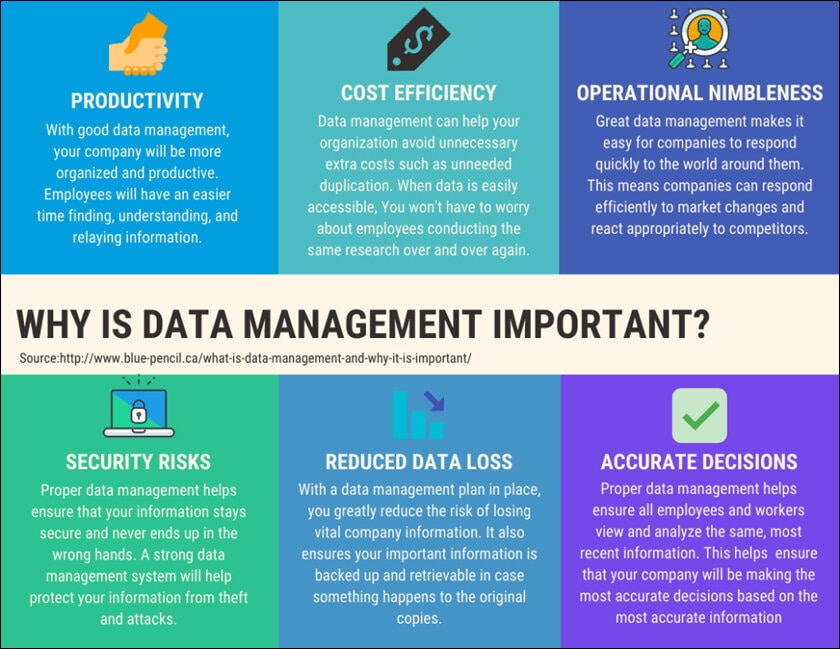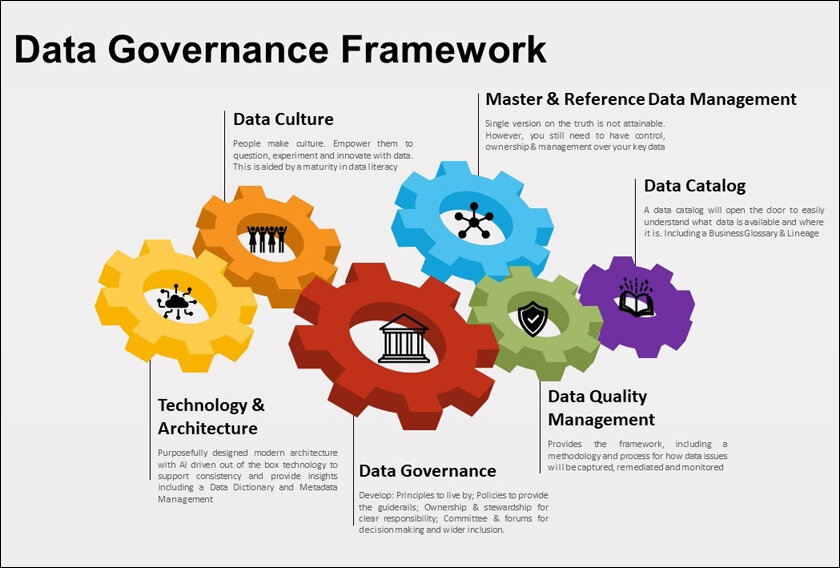Data is the fuel that drives modern organizations in the digital age. Discover strategies to harness the power of your data while ensuring quality, security, and compliance.
In the digital age, information is the main asset of any company and organization. Whether it is customer details or accounting records, KPIs or patents, data is at the heart of value proposition, innovation, and business outcomes. However, the management of data has become a herculean task.
So the next question is obviously in what ways can organizations leverage data while managing risks and addressing compliance issues? The answer lies in the ability to put in place sound data management systems.

The Role of Data Management
Data management is a comprehensive solution that covers data generation and procurement, data processing, analysis, data retention, and archival or disposal.
When done correctly, proper data management offers the following:
1. Enhanced data quality and accuracy
2. Better data protection and privacy
3. Streamlined regulatory compliance
4. Increased operational efficiency
5. Informed decision-making
The absence of a unified data management strategy means potential development of data silos, disparity, duplication, and insecurity.
What are the consequences? Lost revenues, system inefficiencies, and possibly catastrophic data loss, theft, or noncompliance.

The Need for a Data Governance Framework
This framework must address roles, responsibilities, policies, and procedures for managing data in the organization.
Crucial components of the framework include, but are not limited to, the following:
1. Ownership and management of data
2. Classifying and protecting data
3. Data quality standards and controls
4. Policies regarding the retention and disposal of data
5. Compliance requirements
Adopting a clear-cut governance structure helps to assign responsibilities, ensure compliance with the best practices, and increase the level of openness when working with data in any organization.

Implementing Data Quality Controls
Inaccurate, incomplete, and duplicate data may result in wrong analysis, decision-making, and cost implications. Hence, data quality controls need to be put in place.
What should be done? Conducting data audits, creating data verification procedures, and using data quality software to detect and fix problems.
Challenges That Come with Data Integration and Interoperability
Today, Information is highly dispersed and may exist in various databases and structures. Data management requires smooth compatibility and interconnectivity because it is the only way to operate beneficially. With the help of data integration solutions one can unite data of different types, avoid the existence of isolated databases, and obtain an idea of data in the organization.
This is where organizations should think about data virtualization, centralized data repositories, and application program interfaces (APIs) that facilitate data exchange.

Strengthening Data Security and Privacy
Protecting confidential information remains crucial considering the growing prevalence of data breaches and privacy issues.
Access controls, encryption, and effective intrusion detection systems (IDS) are important aspects of data security. Besides, organizations face the challenge of adhering to several data protection laws such as GDPR and CCPA, which regulate how data should be processed and the consumers’ rights to protection of their data.
Other measures to strengthen data security and privacy include conducting risk analyses periodically, security assessments, and personnel training and education.
Optimizing Cloud Computing and Modern Data Architectures
Solutions such as cloud storage and processing help organizations to store and process big data at a relatively low cost, whereas data lakes and, more recently, data fabrics help organizations to manage multiple sources of data in one place.
However, this requires careful planning and migration strategies, along with ongoing optimization to ensure maximum value and minimal risks.

Continuous Monitoring
Data management is not a one-time engagement but a continuous journey. Organizations should pay keen attention in order to identify any lapses or inefficiencies in their data management systems.
Regular performance assessments, user feedback, and adopting the latest technologies can help organizations draw maximum value from their data assets.
The Way Forward
Effective data management should encompass data governance, quality controls, integration, and security and leverage modern architectures. Through this, organizations can transform their data from a burden into a strategic asset.
The benefits? Improved decision-making, enhanced operational efficiency, stronger compliance, and a competitive edge in an increasingly data-centric landscape. Adopt good data management practices and get the most out of the data resources of your organization.
In case you missed:
- None Found










